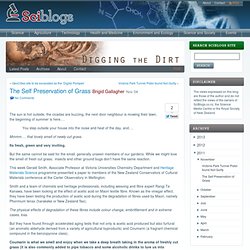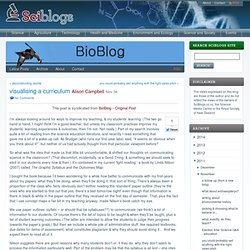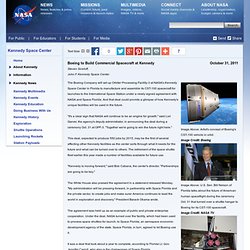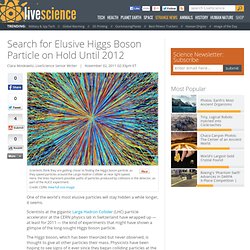

NASA in Final Preparations for Nov. 8 Asteroid Flyby. Answer simple question – win an iPad. The catch – you are limited to 140 characters on Twitter.

Oh, yes, also the entry must “explain the origins of the Universe.” Credit: Wikipedia Simple – should be plenty of entries for that! I guess the trick is in the syntax, as well as the science. Have a look at Otago University‘s Centre for Science Communication Twitter Competition for the details. Deadline is Tuesday 15 November. And, Professor Lawrence Krauss, author of the forthcoming book A Universe from Nothing: Why There Is Something Rather than Nothing.
The Self Preservation of Grass. The sun is hot outside, the cicadas are buzzing, the next door neighbour is mowing their lawn, the beginning of summer is here….

You step outside your house into the noise and heat of the day, and…. Mmmm…. that lovely smell of newly cut grass. Its fresh, green and very inviting. But the same cannot be said for the small, generally unseen members of our gardens. While we might love the smell of fresh cut grass; insects and other ground bugs don’t have the same reaction. This week Gerald Smith, Associate Professor at Victoria Universities Chemistry Department and Heritage Materials Science programme presented a paper to members of the New Zealand Conservators of Cultural Materials conference at the Carter Observatory in Wellington. Smith and a team of chemists and heritage professionals, including weaving and fibre expert Rangi Te Kanawa, have been looking at the effect of acetic acid on Maori textile fibre. Coumarin is volatile, plus a natural anti fungal and pesticide.
Visualising a curriculum. I’m always looking around for ways to improve my teaching, & my students’ learning.

(The two go hand in hand. I might think I’m a good teacher, but unless my classroom practices improve my students’ learning experiences & outcomes, then I’m not. Not really.) Part of my search involves quite a bit of reading from the science education literature, and recently I read something that gave me a bit of a wake-up call. As Brydget (who runs our first-year labs) said, “it seems so obvious when you think about it!” Sciblogs Events.
A Laser to Give the Universe a Hernia? Think back to 2008, when the Large Hadron Collider (LHC) was about to be switched on for the first time.

Remember all those “micro-black hole,” “spacetime-ripping,” “stranglet-creating” doomsday headlines? TOP 5: Misconceptions About the LHC Although much of the hype was complete nonsense, those pesky physicists are at it again; they want to build a laser so powerful that it will literally rip spacetime apart. (Keanu Reeves, over to you.) The headlines write themselves. What’s more, by giving spacetime a hernia, it is hoped that theorized “ghost particles” may spill from the fissure, providing evidence for the hypothesis that extra-dimensions exist and the vacuum of space isn’t a vacuum at all — it is in fact buzzing with virtual particles. SCIENCE CHANNEL: DIY Wormhole. Boeing to Build Commercial Spacecraft at Kennedy, Create 550 Jobs. Steven Siceloff, John F.

Kennedy Space Center The Boeing Company will set up Orbiter Processing Facility-3 at NASA's Kennedy Space Center in Florida to manufacture and assemble its CST-100 spacecraft for launches to the International Space Station under a newly signed agreement with NASA and Space Florida. And that deal could provide a glimpse of how Kennedy's unique facilities will be used in the future. "It's a clear sign that NASA will continue to be an engine for growth," said Lori Garver, the agency's deputy administrator, in announcing the deal during a ceremony Oct. 31 at OPF-3.
This deal, expected to produce 550 jobs by 2015, may be the first of several affecting other Kennedy facilities as the center sorts through what it needs for the future and what can be turned over to others. How Much Does the Internet Weigh? Search for Elusive Higgs Boson Particle on Hold Until 2012. One of the world's most elusive particles will stay hidden a while longer, it seems.

Scientists at the gigantic Large Hadron Collider (LHC) particle accelerator at the CERN physics lab in Switzerland have wrapped up — at least for 2011 — the kind of experiments that might have shown a glimpse of the long-sought Higgs boson particle. The Higgs boson, which has been theorized but never observed, is thought to give all other particles their mass. Physicists have been hoping to see signs of it ever since they began colliding particles at the LHC in 2008. Yet there is still no sign of the Higgs. "LHC is running fantastically, it's marvelous," said CERN particle physicist Christoph Rembser, who works on LHC's ATLAS experiment. Yet Rembser and others urged caution, saying that they knew in advance it would take time for enough data to accumulate to reveal new particles. Alternate ending: Living on without telomerase.
Aussie scientists develop radioactivity-trapping nanofibers. High performance access to file storage Scientists from Queensland University of Technology (QUT) have developed a new material for cleaning up contaminated water from radioactive leaks and medical processes.
